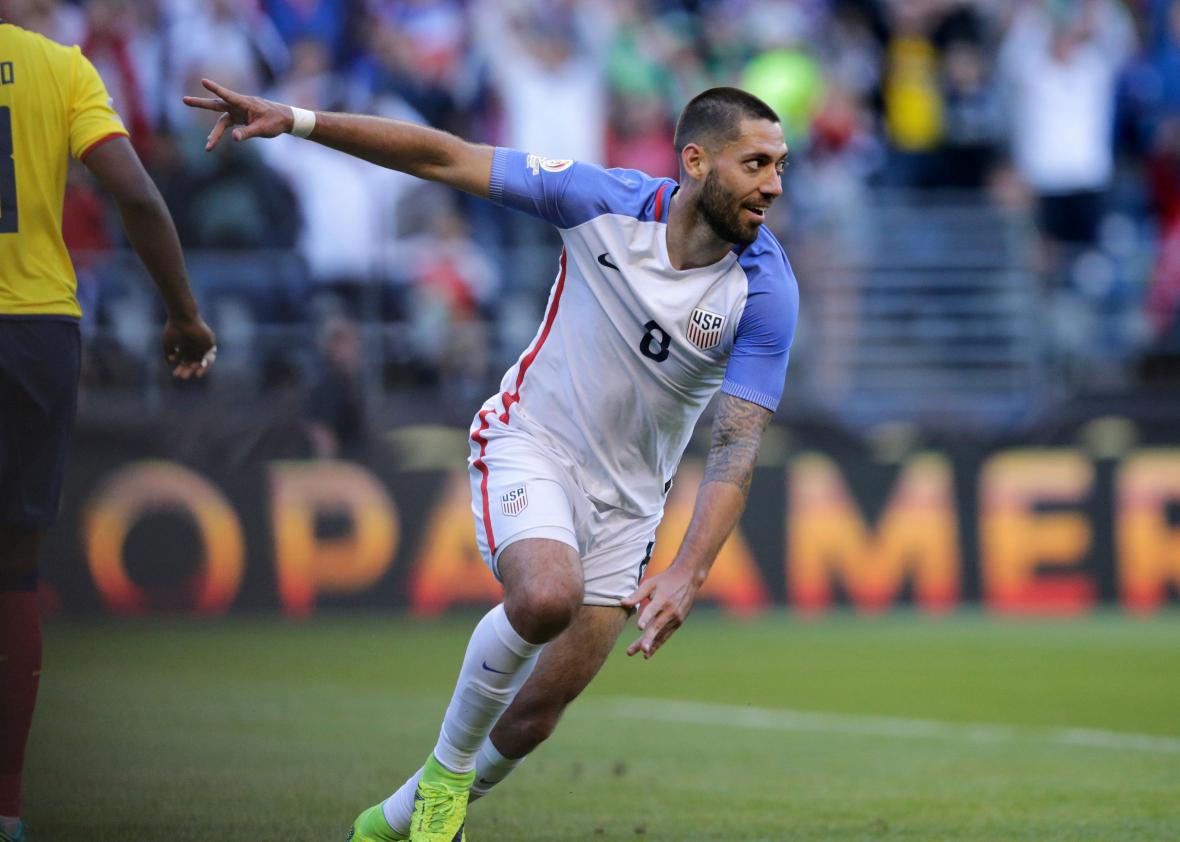The U.S. men’s national team had a problem going into Thursday’s Copa America quarterfinal against Ecuador. After starting the same lineup for the first three games of the tournament to mostly good results, U.S. manager Jürgen Klinsmann was finally forced to make changes thanks to DeAndre Yedlin’s second-half red card against Paraguay. Instead of dropping in the next right back on the depth chart, Klinsmann shuffled his defense around, asking left back Fabian Johnson to play on the right and bringing center back Matt Besler to cover Johnson’s old spot. To Twitter, it seemed like another case of Jürgen out-thinking himself. Was it worth losing the chemistry the back line had built up through the group stage? Would the tinkering come back to cost the team?
Put simply, no. The U.S. spine remained the same, and its play saw the team through its quarterfinal. John Brooks’ personal gravity field continued to ensure that every ball hit into the box reached him instead of an opposing forward. Michael Bradley continued to slide and cover and disrupt play just enough to ruin an offensive possession. And Clint Dempsey continued to score goals, finding space in the seam of Ecuador’s defense to head Jermaine Jones’ lofted pass home in the 22nd minute. Free coaching advice for Ecuador: Next time, mark the guy who’s scored half of your opponent’s tournament goals since 2014.
Dempsey’s always been a goal scorer, but he wasn’t always so central to the team’s plans. Earlier in his career, he often played best as Plan B. When Landon Donovan wasn’t creating chances, when Jozy Altidore wasn’t able to corral the ball with a defender hanging off his back, when Charlie Davies/Robbie Findley/Eddie Johnson/Edson Buddle weren’t finding the net, Dempsey was the one who could create something from nothing, showing up at the last minute to build himself a goal out of paper clips and duct tape. In other words, as Bruce Arena once said, Dempsey “tries shit.”
That’s Dempsey’s strength and weakness. A free and properly supported Dempsey can run rampant, as when the Seattle Sounders partnered him up top with Obafemi Martins and let them run off of each other like the Showtime Lakers. But when Dempsey’s not clicking with his teammates, he’s just a guy improvising in a vacuum, isolated from the rest of his squad.
This disconnect can be a real problem, and some people argued before the Copa America that maybe the team would be better off if Dempsey wasn’t starting, despite his goal-scoring record and his obvious talent. I agreed with these arguments. I thought that to get the best out of Dempsey at this point you’d have to build the team around him, and that such a structure would hamper the rest of our players. Oops.
Dempsey has added to his game since becoming the focal point of the U.S. offense in the Klinsmann era, particularly as he’s been moved further forward, from outside midfielder to second striker to lone front man, as was the case at the 2014 World Cup after Jozy Altidore’s early injury. Instead of trying shit, he just tries.
This is Dempsey now: battling his way from one moment of improvisation to the next. He’s not nimble enough to dance around tackles or powerful enough to shrug them off. He just keeps going anyway, chopping and grinding until he finds a way through. When he absorbs contact, you can tell he feels it, often because it knocks him off his feet. Dempsey will sit there, legs splayed, until everyone has noticed. He earned his second black eye since March against Colombia earlier this tournament, and broke his nose during the 2014 World Cup. He’s turned himself into Indiana Jones, surviving on willpower and guile and testicular fortitude. He makes almost everything look harder than it has to, then generates a moment of inspirational brilliance that makes it all worthwhile.
The second U.S. goal saw everything that Dempsey does well in one play. He didn’t have the acceleration to escape an onrushing Ecuadorian defender on the swiping, no-look, probably-a-shot-attempt that Gyasi Zardes tapped into the net for what turned out to be the winner. Instead, he literally rode Fernando Gaibor’s challenge long enough to get his feet back under him and complete the pass while falling over.
This team has been made in Dempsey’s image, taking the chances presented to it and fighting through the down periods. The U.S. has won two straight matches while playing much of each second half shorthanded and under siege. When Ecuador pushed forward for an equalizer after the dual red cards to Antonio Valencia and Jermaine Jones, it was Dempsey who relieved all that pressure for the first time with a run past three defenders and into space.
Tuesday’s semifinal, against the winner of Friday’s match between world No. 1 Argentina and a tough Venezuela team, will be more of the same. The U.S. will be missing Jones, Alejandro Bedoya, and Bobby Wood, but Yedlin will return and the spine will be intact. The U.S. likely will not be favored, and if it’s matched up against Argentina, then it will likely be under siege. But the team will work and it will fight and when the time comes, it will know where its chance is going to come from.
